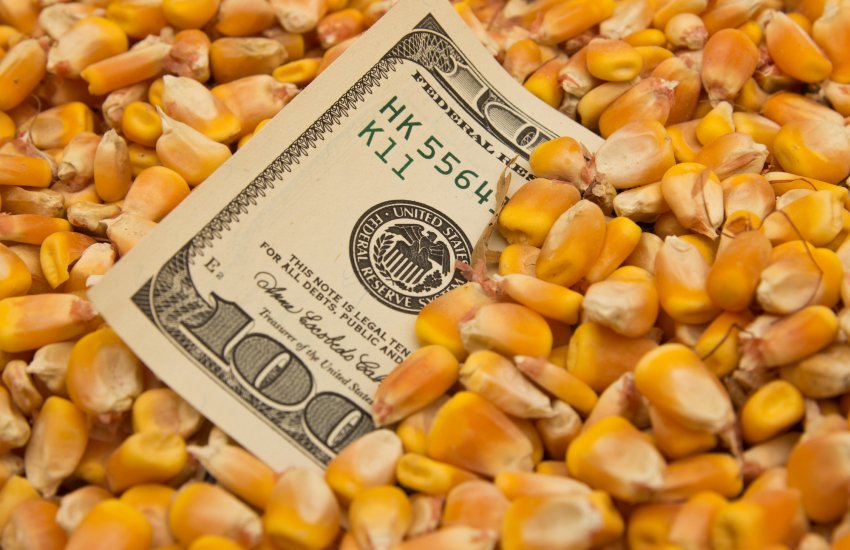Risk of radical revision in US acreage changes the profile of corn CBOT futures

The USDA report for April confirmed expectations for a reduction in stocks due to the factor that we have been highlighting in our editions, the strong US exports. As the tariffs have little direct impact on the United States, exports remain strong and above the curve suggested by USDA with this month’s corrections. This has been supporting prices on the CBOT, now with a very weak dollar helping the flow of local trade. However, on the eve of the start of planting in the US Midwest, a symptom is starting to become very evident: the hypothesis that US farmers will leave the soybean planting in switch for corn or, simply, put part of the area for soil conservation, fearing that the loss of exports to China will push prices down. Could this be a sign that there will be a larger area for corn, beyond that estimated in the planting intention report? Maybe.
The USDA report for this month of April cannot be considered a surprise. We have pointed out here the need for USDA to correct its export projection for the year, due to very high weekly sales. Now, weekly sales have reached 56 mln tons for a projection of 62.2 mln for the year. The issue is that there are still 18 weeks left until the end of the business year and, with sales of 800 to 1 mln tons per week, the department’s forecast was falling behind. So, the correction came with an increase to 64.8 mln tons for the business year. However, the weekly pace will need to decrease from now on to reach this USDA projection. Otherwise, a new projection increase will need to occur.
At this point, the final stocks of the current business year have fallen to 37.22 mln tons, the lowest since 2022, then supporting prices in old-crop contracts (May, July and September). The balance can now be achieved with growing selling pressure from Argentina. The harvest is progressing, exports will increase with the end of the general strike in the country and may neutralize some of the demand for US corn. Brazil has also been sought more intensely for July shipments, tending to absorb demand for US corn.
One of the factors that is beginning to weigh on CBOT futures contracts for the new 2025 US crop is the psychological effect on planting decisions by local producers. In 2018, China taxed US soybeans, and only soybeans, by 25% after planting took place in July. The effect was a cut in the area planted with soybeans in the following season, 2019, from 89 to 77 mln acres, or 12 mln acres less. In 2025, the tariffs are being implemented during the planting decision period in the US Midwest.
The planting intention report did reduce the area, from 87.1 to 83.5 mln acres. However, this research was completed before China’s very strong tariff action on the United States, now at 125%, which also affects soybeans. Since corn does not depend on China, the tariff has little direct influence. So, China is responsible for practically half of US soybean exports each year. Now, would US exports of 50 mln tons sold a year fall to less than 30 mln? This is the great fear generated by the trade war involving soybeans. Local producers, in the process of deciding on planting, could reduce the area planted with soybeans far beyond the planting intention forecast. Would the area stay below 80 mln acres in 2025 for soybeans? We believe so due to the general panic that has taken hold in the US Midwest given the memory of soybeans at USD 8.00/bushel in 2018.
The issue is that we will only know about this correct bias for acreage in the report of June 30, that is, after the planting. On May 12, USDA will release the first supply and demand projection for the new business year, 25/26, in which it will use the planting intention to calculate production. At this point, the doubt is the productivity projection, since the department’s analyst has been overly optimistic in the first estimates. A huge US corn crop is taking shape, but before its confirmation there is the weather between May and August.
For almost 30 years of expertise in the agri markets, UkrAgroConsult has accumulated an extensive database, which became the basis of the platform AgriSupp.
It is a multi-functional online platform with market intelligence for grains and oilseeds that enables to get access to daily operational information on the Black Sea & Danube markets, analytical reports, historical data.
You are welcome to get a 7-day free demo access!!!
Read also
UkrAgroConsult presents market research on Ukraine’s livestock sector
Turkey’s Grain Production Expected to Drop 12% in 2025
Weather in major exporting countries remains favorable for harvesting and sowing
Brazil to set new records in soybean production and exports in MY 2025/26
Export demand for barley in Ukraine is growing, but supply remains low
Write to us
Our manager will contact you soon


